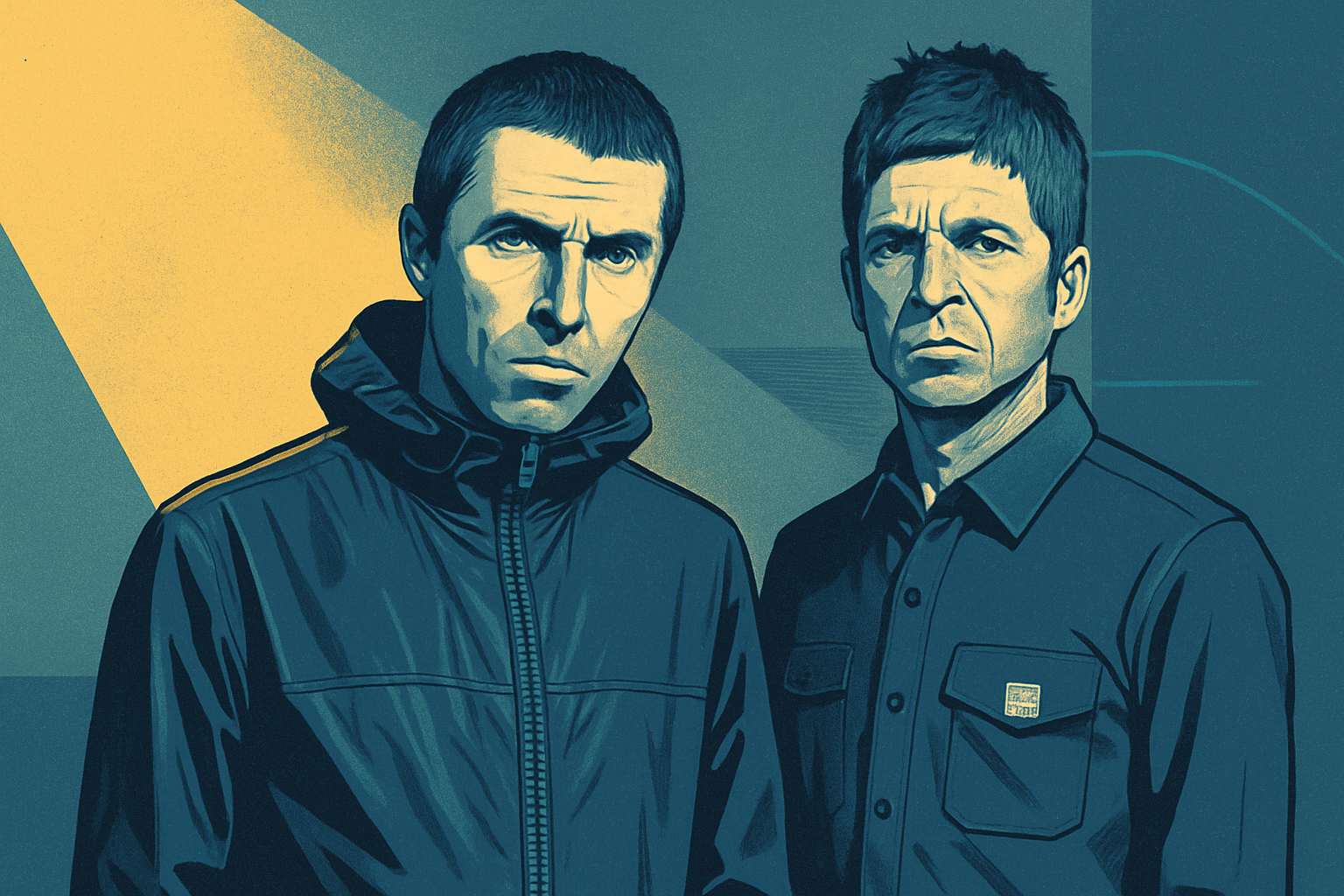The Oasis reunion tour is the year’s hottest ticket. But even though many Gen Z were not even alive when Oasis played their last gig before their split in 2009, the overwhelming hype around the tour proves the lasting resonance of Britpop, which is transcending generational divides.
For small and medium-sized businesses (SMBs), Britpop fever marks a major opportunity to tap into Gen Z’s appetite for authentic visual storytelling in their marketing. According to iStock’s VisualGPS data, 90s and Y2K-style visuals have experienced a huge spike in popularity over the past 12 months with searches for “Oasis” and “Y2K” rising by 340% and 28% respectively.
But what is it about Britpop that resonates so deeply with today’s audiences? And with 97% of British Gen Z stating that authentic images and videos can build brand trust, how can SMBs successfully convey the authenticity Gen Z crave?
Post-pandemic hedonism and expression —
The media often paints Gen Z as a ‘sober-curious’ generation, who would rather stay in gaming or join a run club than go on a night out. However, despite how this generation are portrayed in the media, they yearn for something different.
Gen Z were forced to spend their formative years indoors during the COVID-19 pandemic, deprived of the experiences that shape identity and foster belonging. On top of this, growing economic instability has continued to put pressure on young people post-pandemic, with 59% of British Gen Z citing the cost of living as their top financial concern.
Amid burnout from years of global disruption, the growing appeal of Britpop aesthetics for Gen Z is more than a retro revival; it is a visual reaction to the pressures shaping a generation. There is a desire for escapism and so today’s audiences are gravitating towards joyful, rebellious aesthetics, fuelled by nostalgia and a desire to create meaning in uncertain times.
The effect of Britpop and Oasis on authenticity —
But why has Britpop, and Oasis in particular, become such a powerful beacon in this search for nostalgic escapism?
People saw themselves in bands like Oasis – real working-class boys who made it big. Liam and Noel Gallagher felt genuinely accessible, providing inspiration to large parts of the population who were not used to seeing their lives reflected in the top rungs of popular culture. Even compared to their Southern counterparts, Blur, Oasis’ aesthetic was decidedly unpolished and their authenticity wasn’t curated; it was rooted in everyday life.
Their unapologetic authenticity has persisted even after their split. In stark contrast to the carefully curated images of other public figures, the Gallaghers have continued to provide a refreshing rawness. While most celebrities feed us crafted social media posts, Liam Gallagher is unafraid to turn heads on X, and the brothers’ unfiltered social media presence resonates with Gen Z, who are looking to build connections with what’s real.

Authenticity as Gen Z’s visual priority —
Brands should take inspiration from Oasis’ raw, unfiltered aesthetic to build trust with Gen Z audiences. However, the need for brands to place authenticity at the core of their strategy can feel at odds with the rapid rise of generative AI content on social media.
Our feeds are becoming saturated with AI-generated visuals, from AI “slop” such as glass fruit cutting and animals on diving boards, to the slightly more worrying AI-generated ‘influencers’, designed to lead perfect and polished lifestyles.
This content stands in contrast to Gen Z’s definition of authenticity as “real”, “truthful,” and “original”. Moreover, half (50%) of British Gen Z say they can tell if an image is AI generated because it is too perfect or lacks realism. By relying too heavily on flawless generative AI content, brands risk alienating an audience who are hyper-attuned to authenticity.
The raw, unfiltered energy of Oasis offers a visual guide for brands looking to connect with audiences craving something real and culturally grounded, and SMBs can seek inspiration from the band’s own distinctive visual language.
Unfocused, candid imagery, such as the iconic blurred figures on ‘(What’s the Story) Morning Glory’ and the relatable living room set-up of the ‘Definitely Maybe’ artwork, appeals to Gen Z’s desire for authenticity. Brands should consider replicating this unstaged style in their own content. Behind the scenes content can be just as impactful as the finished product.
In addition, businesses can take inspiration from Oasis and the way they used everyday locations – from the apartment block in the ‘Morning Glory’ video, to the club bathroom of ‘Cigarettes and Alcohol’. Consider how your workspace or areas in which you build your product or connect with your customer could be the setting for a short behind-the-scenes video. When brands prioritise realism and relatability over aspirational visuals, it allows consumers to feel closer to them.
The Britpop revival, spearheaded by Oasis, presents the perfect opportunity for SMBs to tap into Gen Z’s desire for authenticity and build genuine connections with audiences. Brands must replace overly polished, manufactured content in favour of visuals that are real and reflect the lived experiences of their audiences. By embracing this rawness, SMBs can transform a nostalgic moment into a powerful forward-looking strategy.

Jacqueline Bourke is Senior Director – Creative Content EMEA at iStock.




